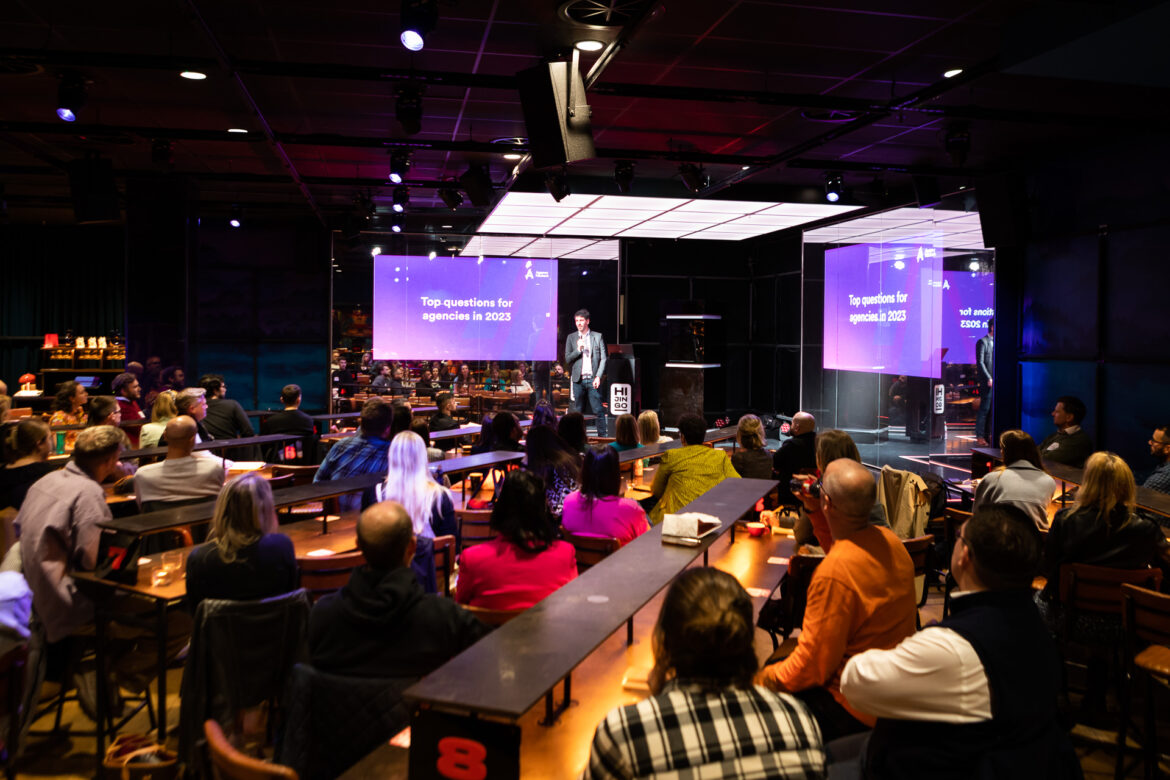
Summary
‣ Here’s the delegate feedback from our latest event, Clockwork.
‣ Overall the feedback was very good – people liked the novel venue, the content, and the overall atmosphere
‣ We need to make the “interview-led” slots work better, and we need to give people more time to ask questions and speak to each other
When I ran my first conference back in 2017, I nearly didn’t send out a feedback form. What was the point? Everybody said it was great. But I did, and I was surprised when the results appeared.
“Two stars out of five.” “One star out of five.” “The talks were boring, the conference wasn’t great.” “We’d been mis-sold on who was coming.”
Oh no! 😱
I thought it went great because on the day that’s what everybody said. But now I realise: in real life, you generally only hear nice things. Some people are always disappointed with certain things, and they won’t say unless you ask.
Since then we’ve (mostly) always done feedback forms after our events.
Here’s our approach:
- We don’t say: “What did you not like?” Instead, we ask: “Imagine YOU are in charge of the next event and you have to make it better. What do you change?”
- That makes it more constructive, and it gets people to think harder. It also makes it more likely that they’ll be honest because they’re telling you what they’d do, not all the ways you messed up.
- We also commit to publishing the results in posts like this. I can’t prove it, but I think this makes people more likely to bother telling you stuff because they trust that we’ll read it and do something with it.
Here’s what we learned from our most recent event – Clockwork.
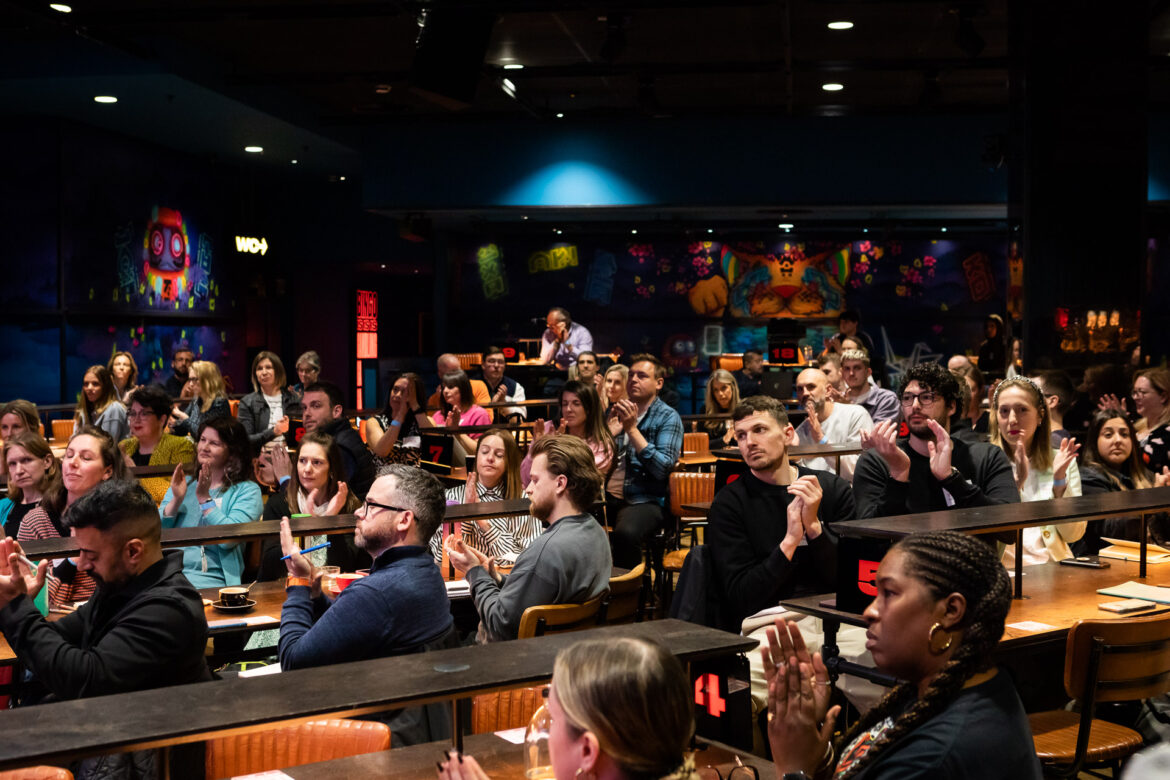
Clockwork was an event aimed at agency leaders and operations leaders. We held it on May 2nd 2023 at Hijingo near Liverpool Street, a futuristic multi-sensory bingo hall that we thought would work as an interesting conference venue.
We had 120 people attend. Overall, people liked the event a lot. 20 people filled in the feedback form, and here’s how they scored:
⭐️⭐️⭐️⭐️⭐️ – 9 people
⭐️⭐️⭐️⭐️ – 9 people
⭐️⭐️⭐️ – 2 people
So overall, quite good.
Firstly, what did people like?
- People liked the organisation and atmosphere
People thought the day was well-organised, and it had a good vibe:
- “Well-organised, as ever.”
- “Good atmosphere and mix of people/agencies.”
- “Great venue and good collaboration/opportunity to chat between speakers. Good for networking.”
- “Loved the atmosphere of being ‘with your tribe’ due to the specificity of the day!”
- “The event felt very fast-paced, I hadn’t even realised 3h had gone by until I checked my watch. I believe Ian’s interviewing skills greatly helped in this, it didn’t feel like the speakers were just reading slides and presenting, rather Ian always had some ideas to bounce off of them as they spoke, making it more interesting.”
- “I really liked the chatting in-between talks. This was a perfect way to find out what other people’s issues are and how they are attempting to improve.”
Reaction: We do put a lot of thought into sticking to time, planning the flow of the day, and sending out emails to remind and prepare people, so it’s nice that’s noticed. Interestingly, one small thing people always comment on are the name badges. Other conferences sometimes either don’t have these, or they print your name really small so it’s hard to see.
Ours simply have the person’s first name printed really big, with the company underneath.
We also use sticky labels, rather than lanyards. (These are special fabric labels that stick to clothes without damaging them.) We find these work much better than pinned badges and they use no plastic.
- The unique venue. People overwhelmingly liked our venue, Hijingo:
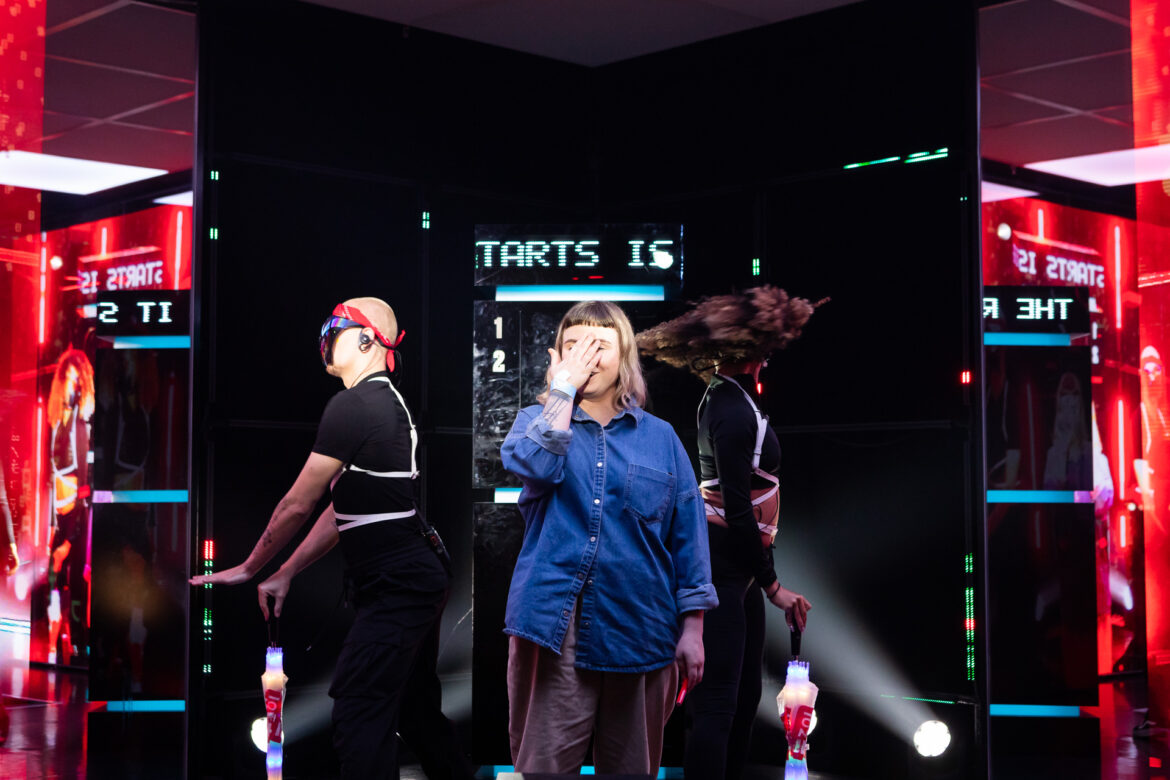
- “Venue was very cool – I love that there are no beige hotels with AH events.”
- “Loved the crazy venue. The bingo layout was unexpectedly handy, no craning necks if you’re on the ‘wrong’ side of a round table! “
- “Great venue even though the high stools were not conducive to a whole afternoon sitting on one’s arse!”
Reaction: Very pleased the venue worked. In the future, we’re keen to make our conferences more of an “experience” – and using Hijingo, with its giant screens and coloured lights worked well.
After the conference we played a game of bingo. This worked really well – it’s a show where actors and dancers come out and put on a little show involving the audience.
I was slightly fearful this wouldn’t work with some of the more introverted operations people, but overall it went down well.
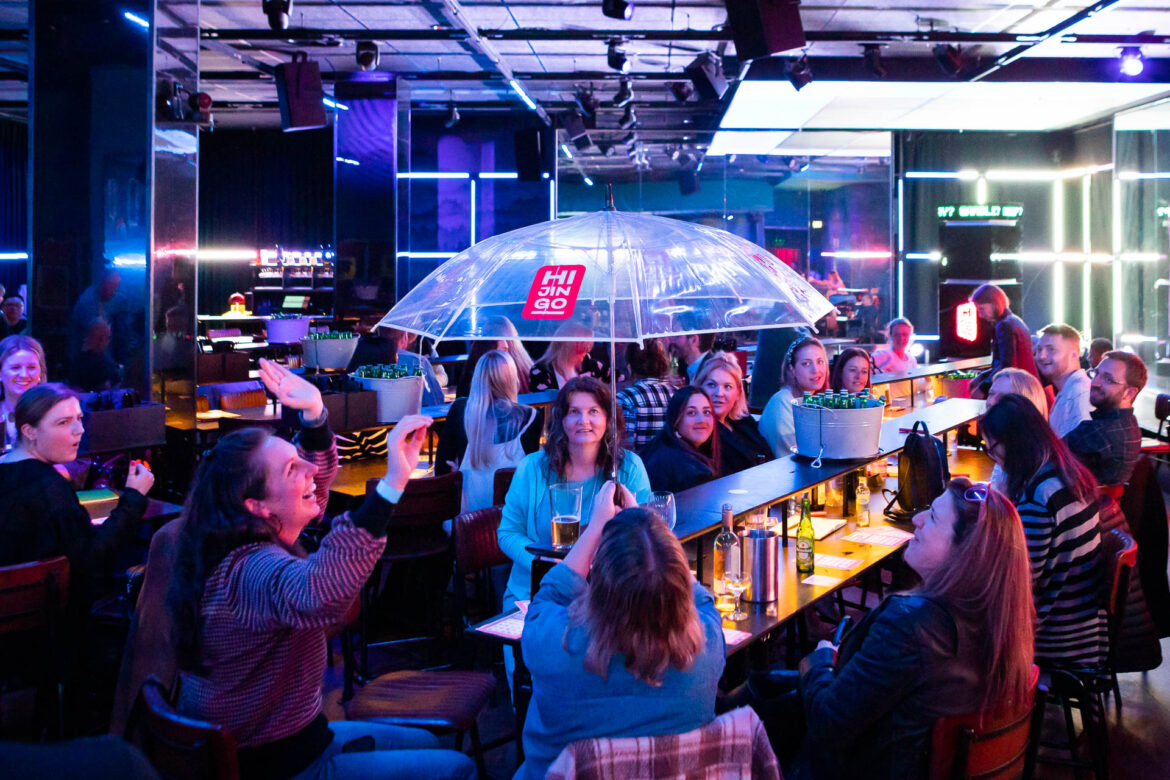
- People liked the networking and interaction:
- “I really liked the chatting in-between talks.”
- “Moving tables half way through to meet up with new people so useful.”
- “Being encouraged to switch seats to meet more people.”
- “The table format was also really conducive to group discussion.”
Reaction: People do appreciate being able to properly meet the other delegates. It’s amazing how many other conferences and events miss this. The whole point of coming to something like this is to meet other people doing your job at different agencies.
It costs us more to do it this way because, generally, having people sat facing each other reduces the capacity massively. It basically rules out big “theatre-style” venues.
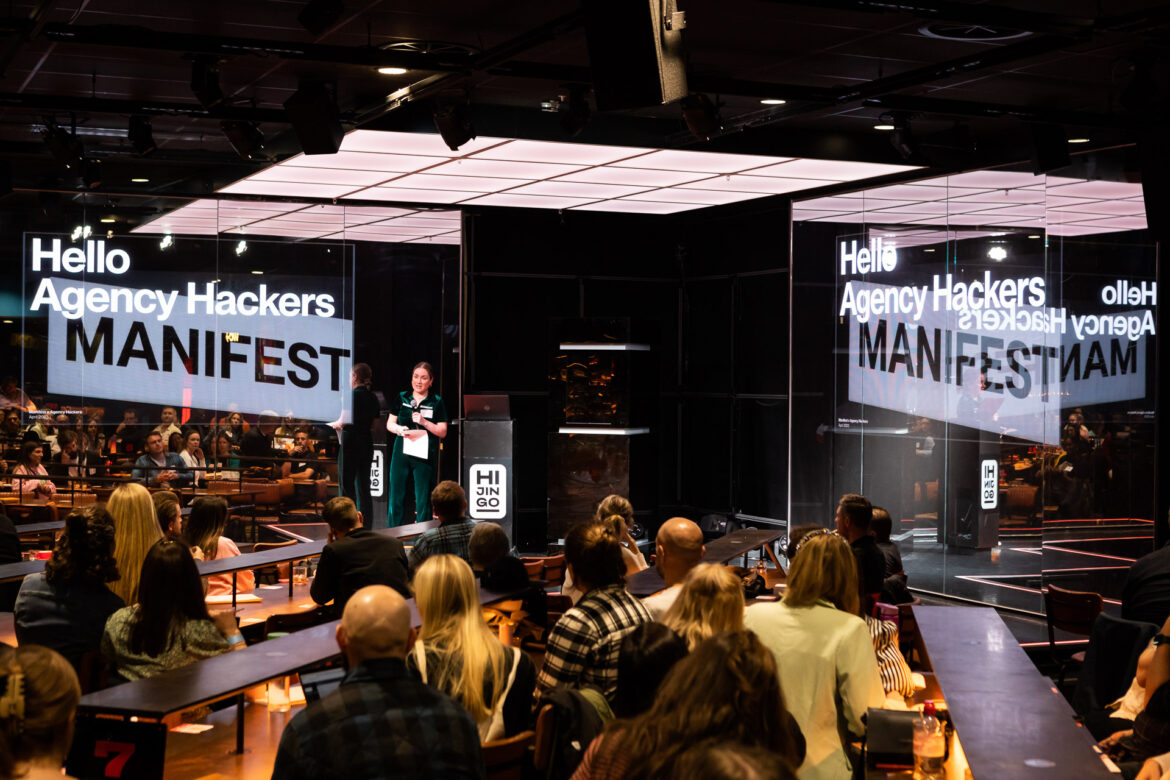
- Generally, people liked the content and speakers:
- “Speakers were great. I liked the range of topics covered, and the structure of the talks in that they all showed what they had directly implemented to solve a problem, plus the speakers’ honesty in what worked and didn’t work.”
- “Good mix of speakers.”
- “Excellent presentations that were well delivered and different in terms of topic and style.”
Reaction: Nice feedback – our team Kirstie and Sophie put a lot of work into sourcing interesting speakers.
There’s more we need to do to make sure people get clear takeaways, as we’ll come to later.
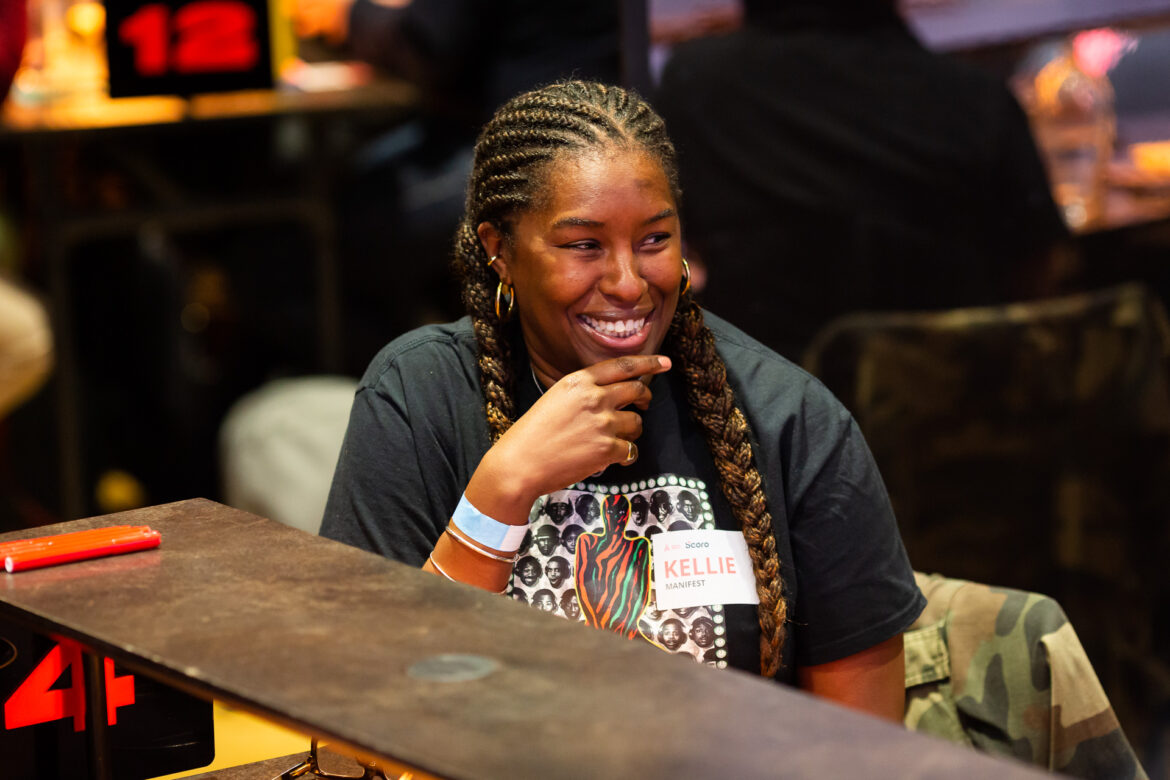
- The tone and “vibe” was also mentioned quite a lot
- “Ian the MC was great, inclusive, light-hearted, great at keeping conversation going. Name badges so helpful. Moving tables half way through to meet up with new people so useful. Drinks at the end for networking was a great way to meet new people. The interactive game was great. Loved the crazy venue. I liked the presentation using the interactive survey too, what a great tool.”
Reaction: Vibe and tone is quite interesting. We want our events to feel serious but also have a sense of self-deprecating fun: yes we’re all professionals, but some gentle British piss-taking is fine.
Improvement #1 – Find a presentation format that pleases everybody
Now for the interesting part. Here’s what people said they would improve.
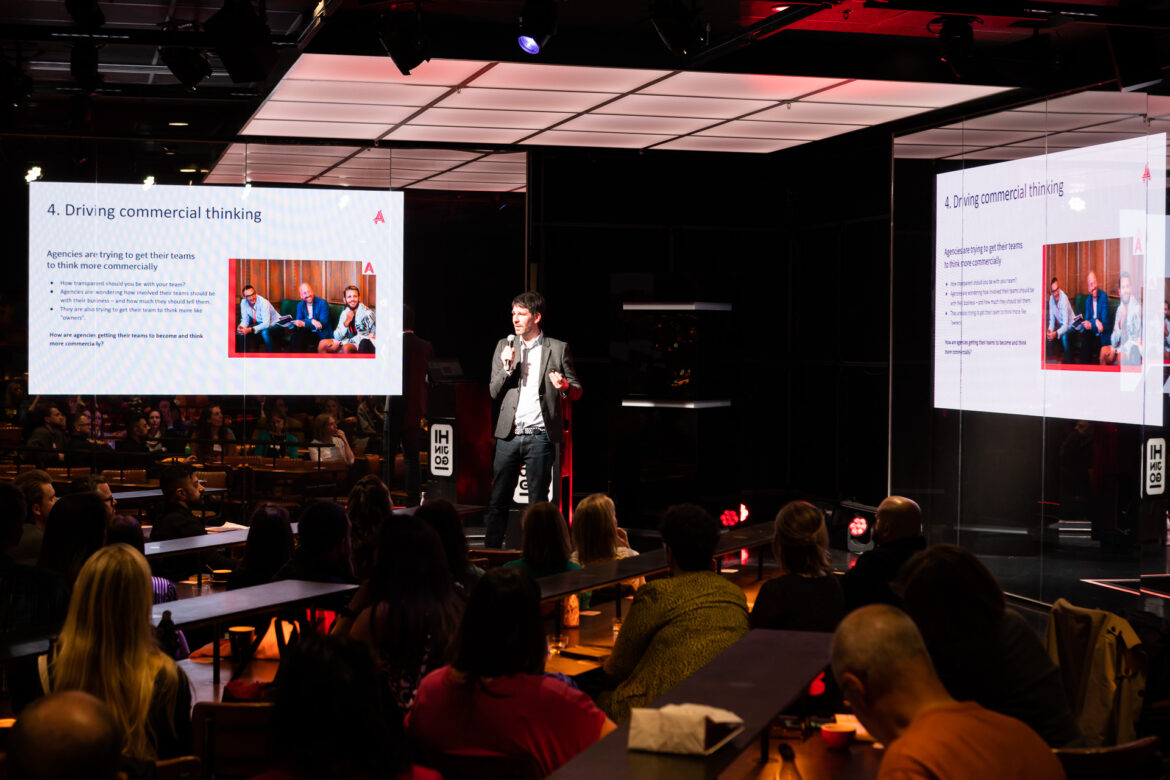
At an event, one thing you always get feedback on is the presentations. At Clockwork, people overwhelmingly enjoyed the talks. But we had three comments asking for some of the talks to be more structured – with more obvious and meaty takeaways.
We kind of always get some variation on this in the feedback. It’s tricky because people seem to want different things:
- Some people liked the presentations with slides, and wanted fewer “unplugged” interviews.
- Some people said they preferred the ‘unplugged’ interview approach, and wanted fewer slides.
- Some people said they didn’t think my interviewing was very good in the “unplugged” parts.
- People felt we didn’t leave enough time for questions.
I thought our speakers did a great job, and the feedback we got on the talks was very good. Our job as hosts is to establish a format that our speakers can use, and so that’s actually something that’s quite difficult.
Nonetheless, it’s something we’re now putting real effort into figuring out:
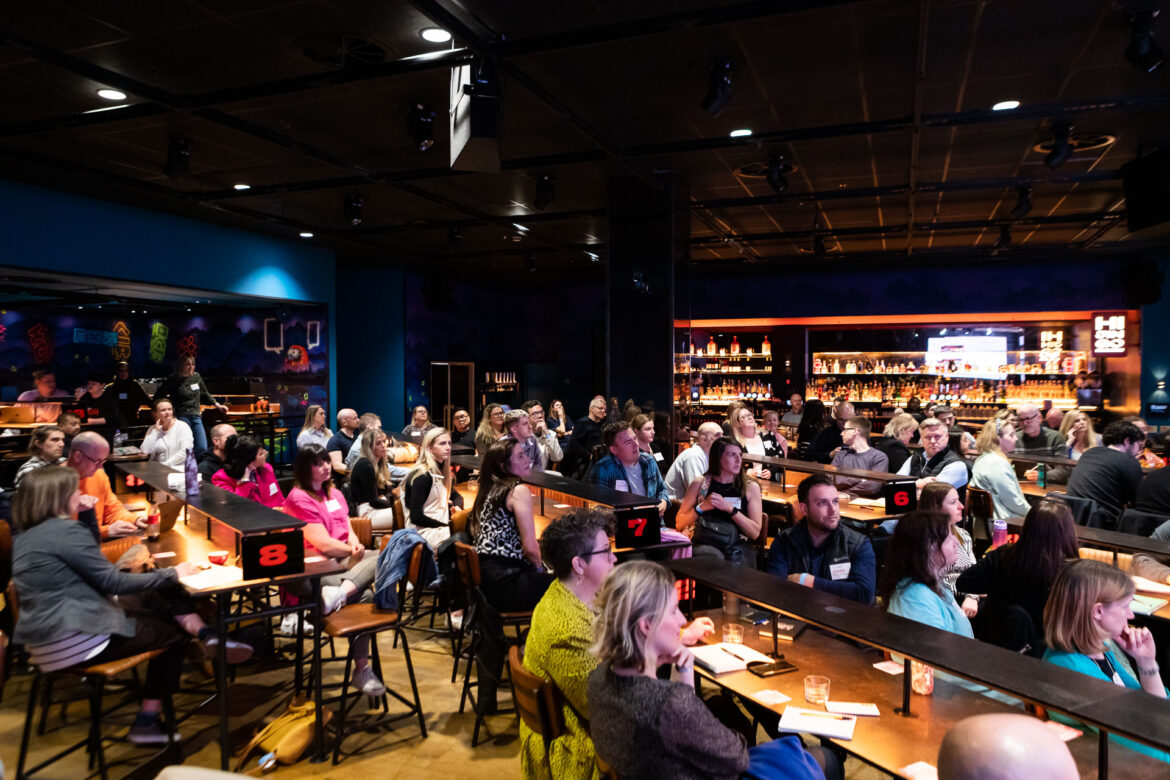
- In the early years, all our talks used to be slide-based. People would turn up and give a PowerPoint presentation.
- But the problem was, some of these would end up being boring. Or if not boring, so vague as to be useless. They would sometimes skip the interesting parts, too.
- So instead of slides, we started asking people not to bring anything. Instead we’d “pre-interview” people to find out their story, and then pull the story out of them by doing a live on stage “interview” – where we walk them through their story step by step.
- This way, we could make sure they stick to the interesting bits which we know about thanks to the pre-interview. And if they skip the juicy stuff, we can interrupt. (“Why did they sue you exactly?”)
We did that for a while. But in January we ran an event and people started saying they wanted to “see things”. So we went for a mix. We re-introduced slides and the “unplugged” interview format.
Reaction: My main takeaway from the feedback is that with slide talks, people want the chance to ask questions. And with “interview-style” talks, people can feel lost unless you signpost the story for them. (It’s frustrating because we actually have this material – we just don’t show it on the screen.)
Our proposed solution
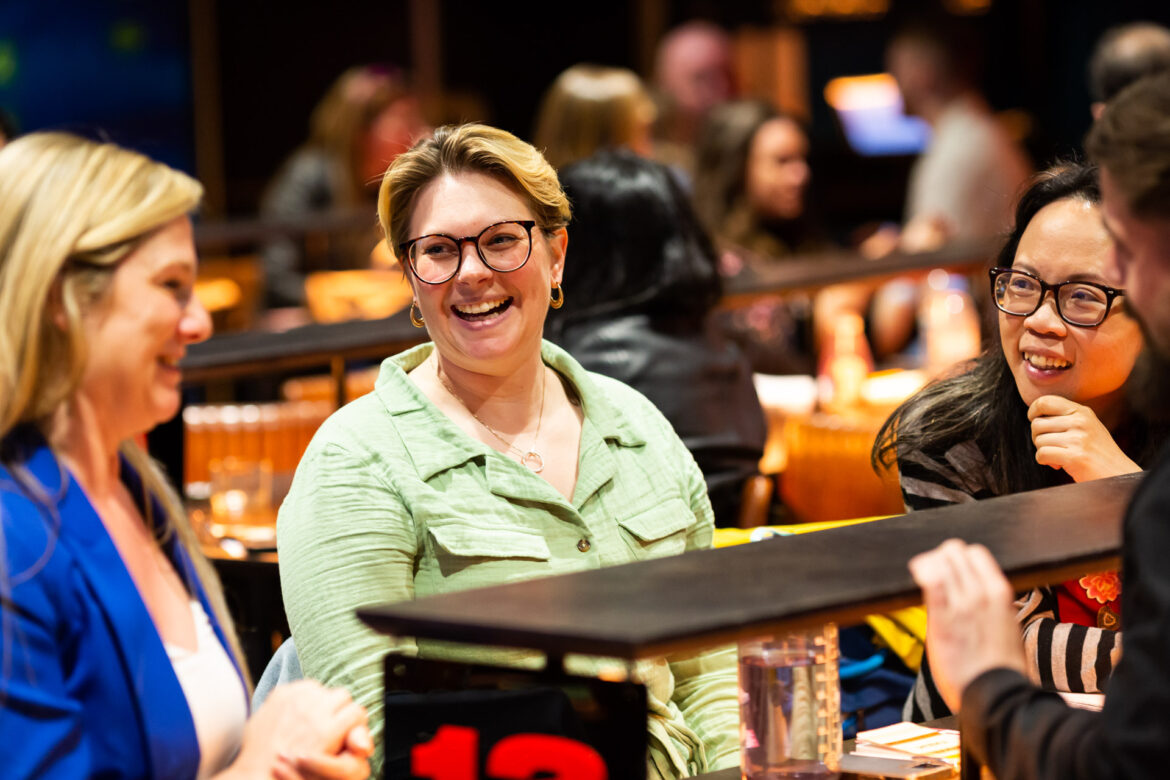
We’re going to do two things in future:
- We will have a mixture of slides and interviews
- When we have slides, we’ll always make sure there’s time for Q&A
- When it’s an interview, we’re going to provide a visual narrative on screen – so you can see where you are in the interview, and what takeaways are coming up.
To go into point three in a little more detail, what we’re going to start doing in future is pre-interview the speaker – and help them boil down their story to the main “beats”.
We’ll have those beats displayed on the screen – so everyone can follow along with where we are in the story. We can bring each point to life with colourful stories, but because you can see where it’s going you feel more engaged.
Example “story beats”
- In the beginning, the agency was in bad shape. Everything was broken. People were dying. Things were bad
2. Eventually, we realised things couldn’t continue. Several clients left. We almost ran out of money. Some people were fired.
3. We started a turnaround. People had heart-to-hearts, processes were overhauled. People waved around the EOS book
4. It didn’t work – but then it did! Progress was slow, but then business picked up and we all found our groove again.
5. Where are we now? Best year ever financially, headcount grew, revenue up, rainbows and unicorns.
Improvement #2 – Make Networking Happen More
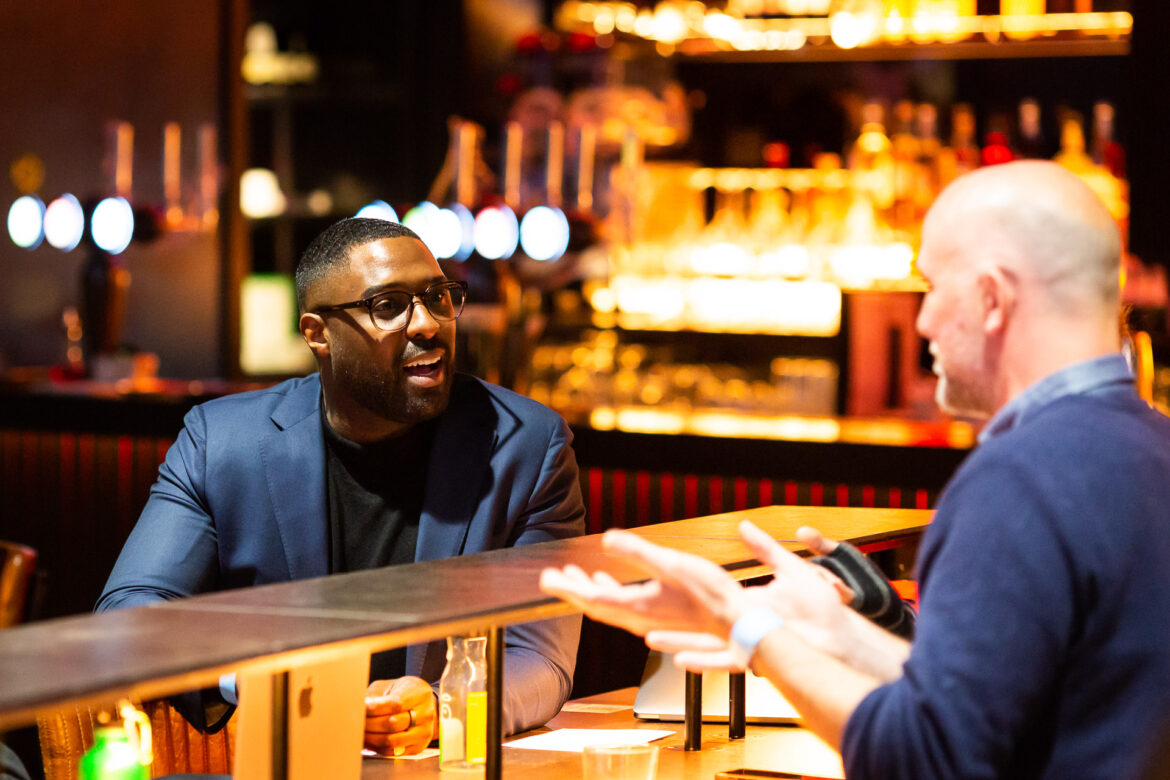
Some attendees would have liked more opportunities for Q&A with the speakers and more time for networking.
This is something we’re conscious of. At our events, you do get to chat to the other delegates more because we build that into the schedule. After certain talks, you get a chance to reflect with others on your table.
And the fact that you ARE at a table, and not sat in a theatre-style row, allows for that.
But some people want more – and they want the part where we ask them to switch tables to be a bit more structured:
- “I felt the only small tweak I’d make is make it a mix of content. This event felt like lots of talks, with not many opportunities for questions, due to timing and having so many talks, so maybe drop 1 talk and have a slot with all speakers and offer more time for Q&A or networking, informal chats in groups with the speakers, perhaps.”
- “Perhaps create fixed groups for breakout? On our table there was a group in the middle of about 6 that chatted, then two on the end who couldn’t really get a look in. So sit people in random groups of six – perhaps a coloured dot on the name badge, and you’re not allowed to sit with anyone of the same colour? Then maybe at the end only your colour. Maybe Hijingo lighting might make this a challenge, so use icons instead?”
Reaction: We will take both of these comments on board. I like the badge icon idea – we will give this a go. As a conference organiser you are a bit nervous about making too much time unstructured. People are paying to be there, and you feel you have to be entertaining them. “Hey, talk amongst yourselves” feels like a cop-out. I think we probably just need to get over this.
Final comments
I’d like to thank everyone for coming to this event, and to our sponsors Scoro for helping to make it possible.
We are alway trying to make our events better – at the time of writing our next event is Happy Clients where you can hopefully see some of these changes implemented. Further out, check out our live events page for more events – and don’t forget to consider whether an Agency Hackers membership would be useful to your audience. We do two or three online events each week for our members, as well as all the in-person ones.